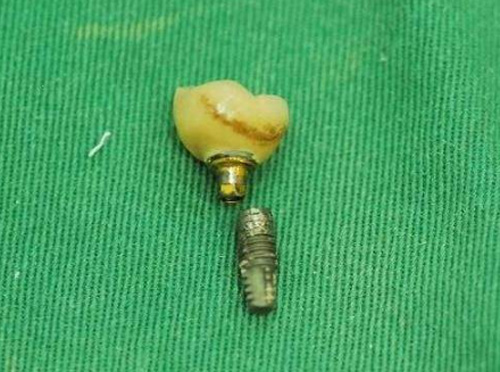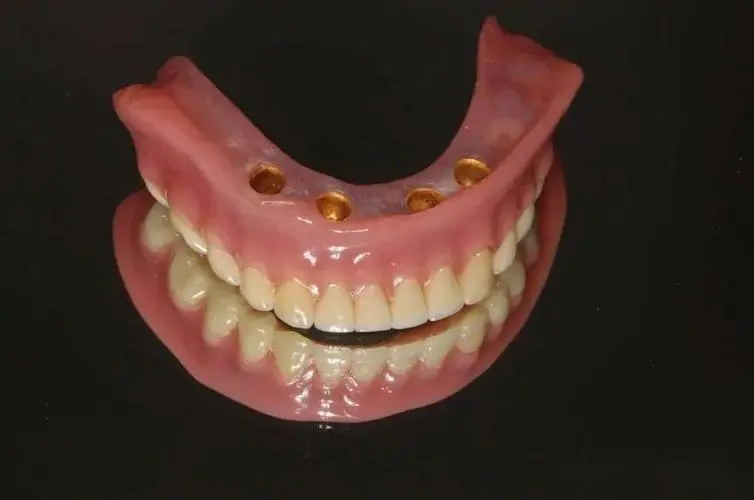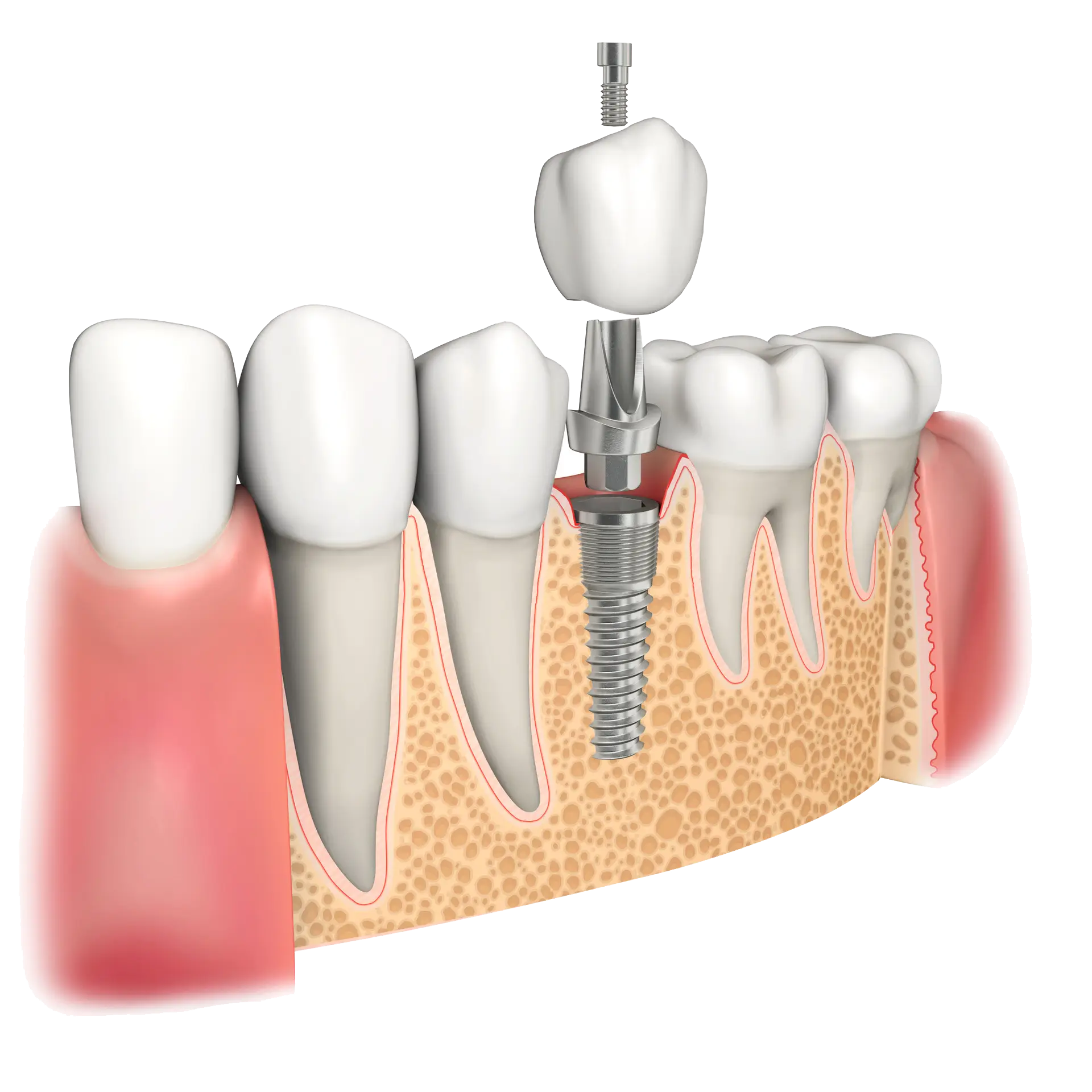Maintaining dental implants’ aesthetic appeal and functionality over time requires regular cleaning and care. It preserves bone health and extends the life of the implant in addition to successfully lowering the risk of peri-implantitis, an inflammatory condition that damages the hard and soft tissues around the implant. Dental implants are sturdy and natural-looking tooth replacements that, with the right maintenance, may last a lifetime or even many decades. This is why it’s critical to understand and consistently follow the right cleaning procedures. This tutorial explains how to properly maintain dental implants and examines potential issues and how to avoid them so that you may have a bright, long-lasting, healthy, and appealing smile.

What are dental implants and how do they work?
- Dental implants are an advanced tooth restoration technology designed to restore the natural appearance and function of missing teeth by implanting an artificial tooth root (the implant) and attaching a dental crown. The implant is typically made from titanium, a highly biocompatible material, which safely integrates into the patient’s jawbone to form a stable support structure.
- The principle behind dental implants is based on osseointegration, where the surface of the implant fuses tightly with the jawbone tissue, creating a stable connection similar to that of a natural tooth root. This process generally takes several months to a year, during which the implant gradually bonds with the jawbone to ensure the crown’s stability and long-term durability.
- Dental implants are suitable for patients who have lost teeth due to trauma, disease, or decay. Compared to traditional dentures or bridges, dental implants offer superior aesthetics, better chewing function, and a longer lifespan. They seamlessly integrate into the patient’s oral environment, making them almost indistinguishable from natural teeth.
- The dental implant procedure typically involves two stages: first, the implant is surgically placed, and then after the implant is securely anchored, a dental crown is installed. The surgery is relatively simple and has a very high success rate, though its success largely depends on post-operative care and regular maintenance by the patient.
- To maintain the health and aesthetics of dental implants, patients must follow the same care routine as they would for natural teeth, including regular brushing, flossing, and using mouthwash. Additionally, regular check-ups and professional cleanings by a dentist are essential. With proper care and maintenance, dental implants can provide a lifetime of beautiful and functional results.
Why Cleaning Dental Implants is Important
The importance of proper maintenance and regular cleaning of dental implants cannot be overstated, as they are essential to preserving the aesthetics, functionality, and longevity of the implants. Neglecting this crucial aspect of care significantly increases the risk of peri-implantitis, an inflammatory disease that can damage the soft and hard tissues surrounding the implant and even lead to the loss of supporting bone.
If left untreated, peri-implantitis can result in the gradual loss of the dental implant and its supporting structures, severely affecting overall oral health and aesthetics. By adhering to regular and scientific care routines, we can significantly reduce the risk of peri-implantitis, ensuring the long-term stability and appearance of the dental implant.
In addition to disease prevention, regular cleaning is vital for maintaining the optimal condition of dental implants. The buildup of plaque and bacteria not only threatens health but also affects the appearance of the implant, causing it to lose its original luster. Just as we carefully maintain natural teeth, dental implants also require thorough and regular cleaning to keep their surface smooth and shining, allowing them to maintain their natural and attractive appearance.
How to Clean Dental Implants
Maintaining the health and durability of your dental implants over time depends greatly on cleaning them. To prevent harm to the implant and the gum tissue around it, it is crucial to understand the proper cleaning methods. As you embark on your dental implant adventure, keep in mind that the kind of care and maintenance your implants receive directly affects how long they last. Dental implants need to be cleaned and maintained by a professional on a regular basis, much like your natural teeth. It’s crucial to remember, nevertheless, that cleaning dental implants differs differently from cleaning normal teeth. To help you effortlessly manage your dental implants, keep them clean and in excellent condition, and increase their lifespan, we have painstakingly put together a comprehensive cleaning guide that is meant to offer helpful and simple-to-follow advice.
Brushing Twice a Day:
In the morning, gently use a soft-bristled toothbrush and fluoride toothpaste to remove bacteria that have accumulated overnight, refreshing your breath. Before bedtime, thoroughly clean your teeth again to reduce food residue and bacterial buildup from the day, lowering the risk of plaque formation at night. When brushing, use gentle, short back-and-forth motions to cover every surface of the implant, paying special attention to cleaning from the base of the implant up to the gumline and crown. Rinse with warm water afterward.
Choosing a Soft-Bristled Toothbrush:
Compared to hard or medium-bristled toothbrushes, soft-bristled brushes are gentler on the gums, effectively reducing the risk of gum bleeding and damage. Despite their gentle nature, soft-bristled toothbrushes still provide excellent cleaning performance, efficiently removing plaque and tartar. Electric toothbrushes, especially those with soft bristles, are even more effective for implant care, as their high-frequency vibrations can reach deeper into the gaps between teeth to remove more bacteria.
Thorough Cleaning Around the Implant Crown:
The area beneath and around the implant crown is a hiding place for bacteria and plaque, increasing the risk of peri-implantitis. Opt for a toothbrush with a tilted neck design to better reach these difficult areas, particularly in the back of the mouth. Additionally, regularly (about twice a week) use professional tools like an ultrasonic cleaner (used cautiously to avoid potential damage from metal tips) to remove stubborn plaque and tartar.
Using a Water Flosser:
Water flossers use high-pressure water jets to effectively dislodge bacteria and food debris from between teeth, making them an essential supplement to daily oral hygiene. Choose a water flosser with a rubber tip or specialized attachment to gently clean sensitive gum areas while avoiding the small particles that traditional floss may leave behind, which could trigger inflammation. If a water flosser is unavailable, unwaxed floss or floss designed specifically for implants is a good alternative.
Floss for Crowns and Bridges:
This type of floss is specially designed for dental implants, with a stiff end that can easily maneuver between the gumline and implant to remove hidden dirt and bacteria. After brushing, use the floss while the toothpaste foam is still present to further protect the implant with fluoride residue, preventing harmful bacteria growth.
Using Low-Abrasive Toothpaste:
Avoid toothpaste containing abrasive ingredients like detergents or baking soda, as these can damage the enamel or acrylic surfaces of the implant. Instead, opt for toothpaste specially formulated for implants or consult your dentist for personalized recommendations.
Regular Professional Cleanings:
Scheduling a professional check-up and cleaning every six months, or as recommended by your dentist, is key to maintaining implant health. Professional cleanings effectively remove plaque and tartar in areas that are hard to reach through daily care, and they can also identify and address potential issues early on, saving long-term treatment costs and preserving overall oral health.
How to Clean All-on-4 Implants
Although the basic cleaning principles for All-on-4 implants are similar to single implants, their unique design—where four implants support an entire dental bridge forming a complete upper or lower arch—requires extra attention, especially in the area between the bottom of the bridge and the gumline, where food debris tends to accumulate. The following deep-cleaning steps are carefully organized to help you maintain the long-term health and aesthetics of your implants.
- Daily Basic Cleaning: Use a Soft-Bristled Toothbrush and Gentle Toothpaste: At least twice a day, use a soft-bristled toothbrush paired with non-abrasive toothpaste to gently brush your teeth. Clean each tooth and the surface of the dental bridge using circular motions, paying close attention to the gap where the bridge meets the gumline.
- Using a Rubber-Tipped Irrigator: Most water flossers come with a rubber-tipped stimulator designed specifically for hard-to-reach areas. At least once a day, use this attachment on a medium to low-pressure setting to gently rinse the hidden areas between the bottom of the bridge and the gumline, effectively removing food debris and bacteria.
- Deep Cleaning with an Interdental Brush: Interdental brushes, with their narrow brush heads, can reach the tight spaces between the dental bridge and the gumline to thoroughly clean any residual debris. For All-on-4 implant users, this is an essential cleaning tool. Many patients report that incorporating an interdental brush into their routine makes daily care more efficient and easier.
- Regular Check-Ups and Professional Maintenance: In addition to daily self-care, regular visits to the dentist for professional check-ups and cleanings are equally important. Dentists can use specialized equipment to thoroughly remove plaque and tartar, assess the health of the implants, and offer personalized care recommendations.
- Precautions: When using a water flosser, be sure to choose an appropriate water pressure to avoid unnecessary damage to your gums or implants. During daily cleaning, if you notice gum redness, bleeding, or pain around the implants, contact your dentist promptly to identify and address potential issues early.

How to Clean Overdentures
- Daily Gentle Brushing: Using a denture brush, gently brush the underneath, outside, and inside of your overdentures at least once a day. Typically, these brushes have soft, tapered, flat bristles that allow them to deeply penetrate both smooth surfaces and tight spaces. Steer clear of toothpaste, which can scrape the denture surface and reduce its shine, and choose instead for a non-abrasive cleanser like a denture-specific cleaner or a gentle dishwashing liquid.
- Before going to bed, immerse your overdentures in a denture-specific cleaning solution for the whole night. The dentures get a thorough cleaning as well as support in keeping their stability and form. To avoid harming the dentures or compromising their efficacy, carefully follow the cleaning solution’s recommendations.
- Rinse Well Before Wearing: To get rid of any remaining cleaning solution and any possible microscopic particles, always rinse your overdentures well with clean water before wearing them again. It’s critical to take this action to lessen oral discomfort, including pain, burning, and stink.
- Frequent maintenance and inspection: Make it a practice to examine your overdentures each day, with particular focus on the integrity and proper placement of parts including O-rings, positioning caps, and clips. If you notice any wear, looseness, or loss, you should get in touch with your dentist very enough so that the denture may be repaired or replaced without compromising its stability.
- change essential components on a regular basis: As advised by your dentist, change the O-rings, positioning caps, and other wearable components on your overdentures. Normally, this happens once a year, although the precise frequency may change based on your unique circumstances. Maintaining the denture’s sealing, stability, and lifespan may be achieved by replacing these components on schedule.
- Installing an overdenture correctly and preventing damage: Biting too hard to secure it might break the attachment, base, or denture itself. The proper way is to use your fingers to carefully slide the denture straight onto the base or rod, ensuring sure that every attachment is securely in place. In order to receive treatment, please get in touch with your dentist right once if you experience installation issues or loose attachments.

What if You Don’t Keep Your Dental Implants Clean?
Numerous detrimental effects may arise if you fail to maintain the cleanliness of your dental implants, including overdentures. This is what may occur:
- Bacterial Growth and Infection: The mouth is a microbiological hotbed. Food particles and bacteria can collect on tooth surfaces, in gum tissue, and in difficult-to-reach crevices if dental implants are not cleaned on a regular basis. The stability and long-term viability of your implants may be jeopardized by these bacteria’s capacity to induce inflammation, which can result in peri-implantitis, also called peri-implant disease. This condition is comparable to periodontal disease.
- Tartar Formation and Plaque Formation: Prolonged neglect of oral hygiene can lead to the accumulation of plaque on dental implant surfaces, which subsequently solidifies into tartar. In addition to being ugly, tartar can aggravate gum disease, raise inflammation, and potentially result in bone loss and gum recession.
- poor Breath and foul Odor: As food particles and bacteria degrade in the mouth, they can release an unpleasant odor that causes both poor breath and foul odor. This can have an impact on social interaction, self-confidence, and physical attractiveness.
- Implant loosening or falling off: In the long term, a failure to treat the inflammation and infection surrounding the implant can damage its link with the bone tissue, resulting in implant loosening or even falling off. This will need more care and maybe even reimplantation surgery.
- Effect on other teeth and oral health: Dental implant-related inflammation and infection have the potential to spread to neighboring teeth and periodontal tissues, which might have an adverse effect on the general health of the oral cavity.
Tips for Maintaining the Health of Dental Implants:
To ensure the long-term stability and health of your dental implants, you can follow these key tips. These measures not only help keep your implants in excellent condition but also extend their lifespan, giving you worry-free oral health.
- Regular Professional Check-ups: Schedule dental visits at least twice a year for thorough oral exams and cleanings. These check-ups help monitor the health of your implants and promptly address any potential issues. It’s also an opportunity for your dentist to assess your daily oral hygiene habits and provide personalized care recommendations.
- Avoid Excessive Pressure: Avoid any activities that may exert excessive pressure on your implants, such as grinding your teeth or using your teeth to open bottle caps. These actions can damage the implants, compromising their stability and function.
- Protect Your Implants: In daily life, refrain from chewing on hard or non-food items, such as ice, hard candy, nails, or pens. These objects can damage the surface of your implants or cause them to become loose.
- Choose Cleaning Products Carefully: Avoid using bleach, chlorine-based cleaners, or other highly corrosive cleaning products on your implants, as they can corrode the metal components of the prosthetics and implants. Instead, opt for gentle cleaning agents specifically designed for dental implants to ensure safe and effective cleaning.
- Quit Smoking and Limit Alcohol: Smoking can lead to gum inflammation and bone loss, severely compromising implant health. Quitting smoking is highly recommended. Additionally, it’s best to avoid alcohol until your implants have fully healed, as alcohol can irritate the mouth and add strain to the healing process.
- Gentle Cleaning: Use a soft-bristled toothbrush and gentle brushing techniques to clean your implants. Avoid using hard toothbrushes or aggressive brushing, and steer clear of abrasive additives like baking soda, which could damage the surface of the implants.
- Healthy Lifestyle: Maintain good oral hygiene habits, such as brushing and flossing regularly, to prevent oral diseases. A balanced diet, regular exercise, and a healthy lifestyle can also enhance your overall well-being, positively impacting the health of your implants.
Conclusion
To maintain oral health after dental implants, brush your teeth twice daily with a soft-bristled toothbrush and fluoride toothpaste to remove bacteria and plaque. Use a soft-bristled electric toothbrush to eliminate more bacteria. Clean around the implant crowns twice a week with specialized tools such as an angled-neck toothbrush and ultrasonic cleaner. Use a water flosser to remove bacteria and food debris between teeth. Avoid abrasive toothpaste and opt for those formulated specifically for implants. Schedule professional cleanings every six months. For All-on-4 implants, perform daily basic cleaning with a soft-bristled toothbrush, rubber tip irrigator, and interdental brush. Regular check-ups and professional maintenance are also essential for keeping implants healthy.




